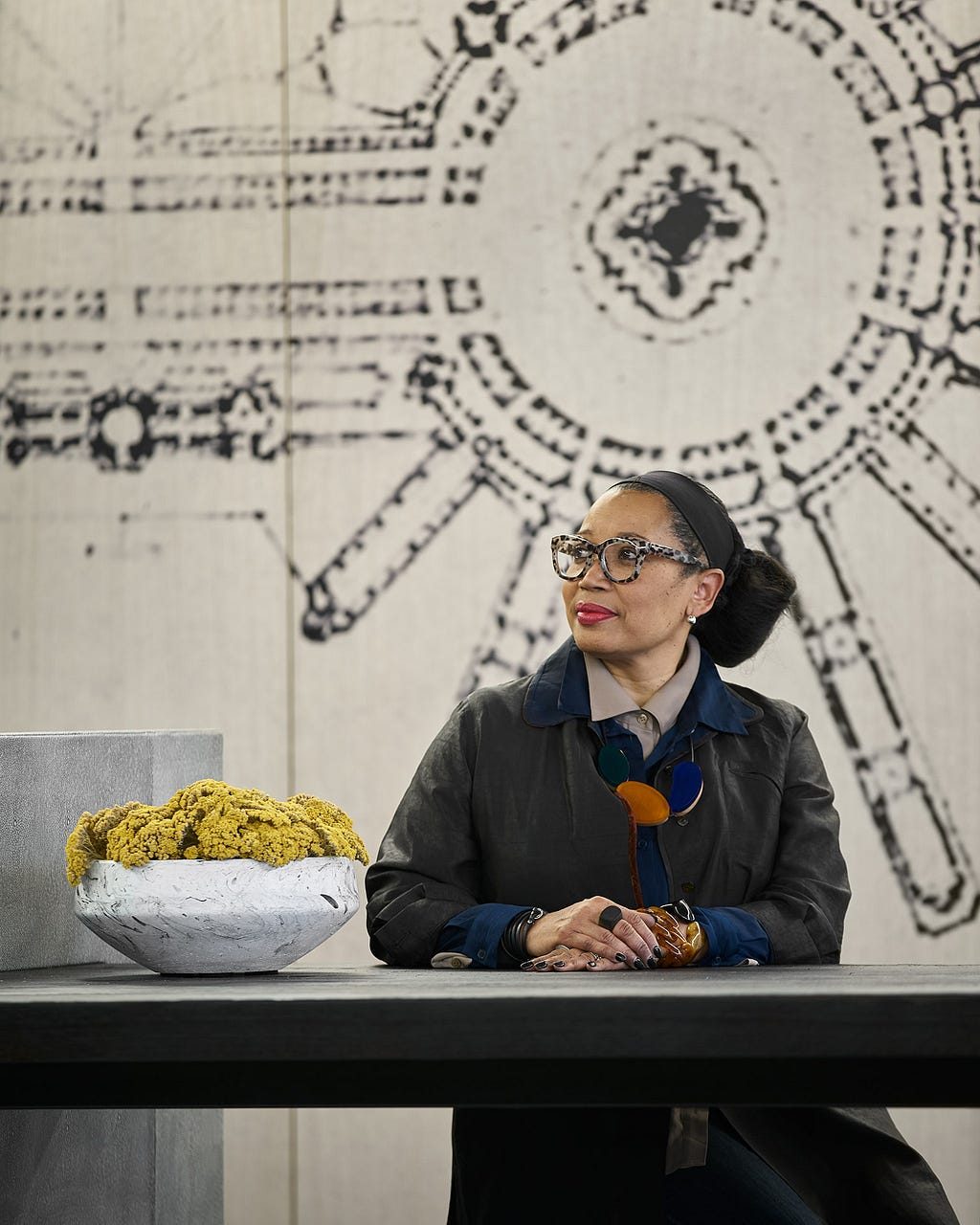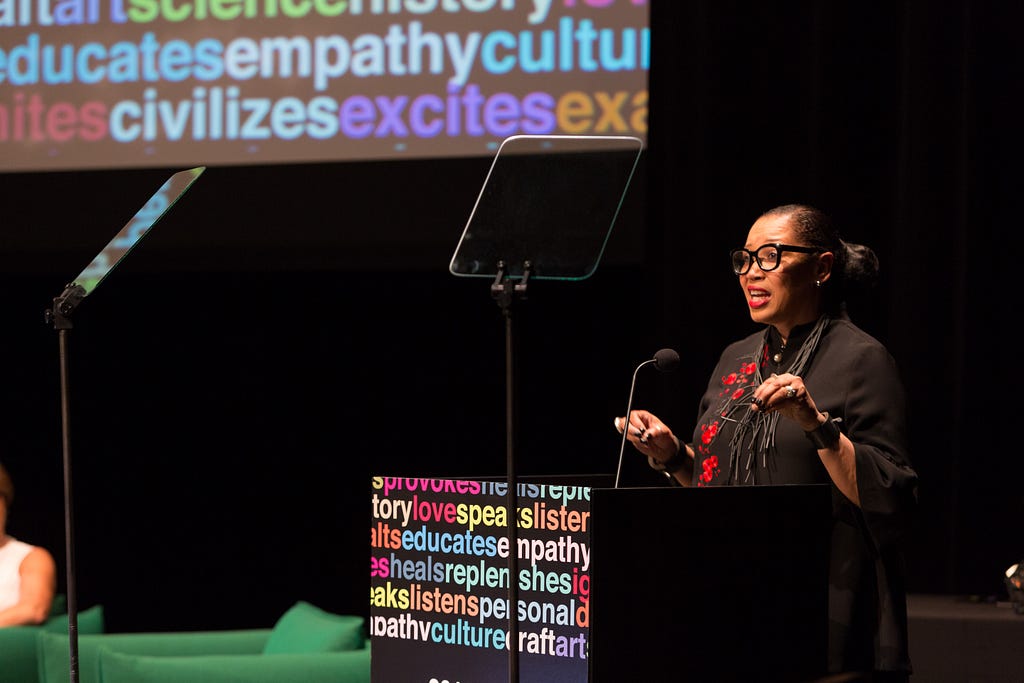“Be cognizant. For companies, this means first recognizing that your team isn’t as diverse as it could or should be.” with Cheryl Durst and Fotis Georgiadis

Be cognizant. For companies, this means first recognizing that your team isn’t as diverse as it could or should be. Most of us feel comfortable in our own “bubbles”, but a lack of diversity is a false feeling of safety. Open your eyes to the inclusion issues unique to your organization.
As a part of my series about “Black Men and Women of The C-Suite”, I had the distinct pleasure of interviewing…Cheryl Durst, Executive Vice President and CEO of the International Interior Design Association (IIDA). An exceptional communicator, innovator, and visionary leader, Cheryl Durst has spurred progress, driven change, and encouraged the expansion of the Interior Design industry. As the Executive Vice President and Chief Executive Officer of the International Interior Design Association (IIDA), Cheryl is committed to achieving broad recognition for the value of design and its significant role in society through both functionality and engagement in everyday workspaces and the built environment. Demonstrated by her active involvement in connecting industry professionals, including designers, manufacturers, clients, end users, and employers, she has worked to promote an understanding of how design impacts human behavior and affects all aspects of shared spaces.
Can you tell us a story about what brought you to this specific career path?
After graduating with a background in journalism and economics, I entered a recessionary job market, and took my first job as a substitute teacher. It was during this time that I began honing my presentation skills — taking on the responsibility to engage my students with information, meeting them at their level.
From there, I was hired by the Washington Design Center, where I initially worked in event and meeting planning, and then moved on to work in sales for a couple of the design showrooms. After spending some time learning about design and the A&D market, the design center ultimately hired me to create a continuing education series/curriculum for designers — programming that was necessary for designers to gain and maintain professional licensure.
When my husband was transferred to work at the Merchandise Mart in Chicago, I began seeking local employment prior to our move and came upon a very new design association — the International Interior Design Association — that was in search of a director of education.
I moved to my current role as EVP and CEO not long after joining the team, and have since spent over 20 years serving the international community of commercial design professionals.
Can you share the most interesting story that happened to you since you began your career?
This is more of an observation than a specific story, but it’s a result of the many years of traveling I’ve done in my role at IIDA. When you spend a considerable amount of time in airports, you begin to see a number of celebrities and notable people in passing. Over the years, I’ve watched people like Oprah Winfrey, David Sedaris, Colin Powell, Anthony Bourdain, and Madeleine Albright as they maneuver through security, waiting at the gate, and boarding a plane — all activities that seem to equalize us. Invariably, I’ve seen that these people behave with patience, positivity, and gratitude. It’s interesting to think about the world we live in today, a world in which many are presenting themselves as “larger than life,” the people who truly are “larger than life” so often choose humility and kindness. It’s amazing to see, and has stayed with me over the years.
Can you share a story about the funniest mistake you made when you were first starting? Can you tell us what lesson you learned from that?
One of my first jobs was as a copywriter at an agency. I was a couple of weeks into my new role, and was in attendance at a very public event. I introduced my boss as “Marie” to a group of our clients — I had been a little unsure that this was correct, but she hadn’t corrected me before, so I felt fairly confident about it. It turns out that her name is actually Marnie. So, I had clients at this event staring at me, likely thinking, “And how long have you worked here?” It was completely embarrassing at the time, but it taught me to always ask someone to say their name to you, and ask again if it isn’t clear — getting a name right is so important.

Can you share three reasons with our readers about why it’s really important for a business to have a diverse executive team?
First, having a diverse executive team demonstrates your company’s values and culture. It provides visibility to those outside of your organization; it’s a signal to other diverse communities that they are welcome in your company and, more broadly, in your profession.
Second, it’s (very slowly!) becoming the way of the world to be more inclusive. It is viewed as the right thing to do — to acknowledge the reality of diversity in life and business.
Lastly, inclusion is incredibly valuable to teams when they’re making decisions or brainstorming new ideas. Diversity of thought, of experience, of background — those are the factors that make conversations dynamic and bring truly innovative results to the table.
More broadly, can you describe how this can have an effect on our culture?
Having diverse leadership expands opportunity on both sides of the equation. From an individual point of view, it provides people with someone who looks or thinks or acts like they do, and allows them to see themselves in that role or that industry. It opens them to possibilities they might not have considered. From the organization’s standpoint, it takes leadership outside of thinking one specific way, broadening the collective mindset and allowing for new ideas and approaches to come to the surface.
Can you recommend three things the community/society/the industry can do help address the root of the diversity issues in executive leadership?
Be cognizant. For companies, this means first recognizing that your team isn’t as diverse as it could or should be. Most of us feel comfortable in our own “bubbles”, but a lack of diversity is a false feeling of safety. Open your eyes to the inclusion issues unique to your organization.
Talk about it. Diversity begins with a conversation. Before it’s a policy or a poster, it starts with talking to one another. Tackle what diversity means for your organization and develop a working definition so you know what you’re aiming for.
Be Courageous. Recognizing bias is hard. Admitting our failures as an organization is hard. Achieving more diverse teams will necessitate changes that can be uncomfortable, and it requires courage to tackle these issues.
How do you define “Leadership”? Can you explain what you mean or give an example?
Leadership is the art and science of inspiring, motivating, and managing. It requires empathy, creativity, humility, enthusiasm, and humor. It’s not about behavior; it’s an attitude. Leadership should always be in the service of others — the people, the company, the industry — not in service of yourself.
Currently, my most important role is in articulating the value of design on behalf of IIDA and our 15,000 members. The work that I do is always in service of promoting the value of commercial interior design, and is ultimately to the benefit of my team, our members, our profession, and our society.
What are your “5 things I wish someone told me when I first started” and why. Please share a story or example for each.
1. You can do some of the things some of the time, but you cannot do all of the things all of the time.
2. Take time to enjoy the amazing moments you have in your professional career; don’t just work right through the good times and move on. Revel in the special moments.
3. It is truly impossible to over-communicate.
4. Nurture and sustain confidence in yourself and in those on your team. Fear and self-doubt are contagious, and it can be incredibly difficult to heal your organization once it has spread.
5. Hire slowly and intentionally, but be quick to let people go when the mutual fit isn’t there.
Reflecting on the fourth and fifth points, a specific example comes to mind. A few years ago, there was a person on my staff that was extremely under-confident in her own abilities and was fearful of new ideas. I have never seen anything dismantle a group of people so quickly — we’ve worked through a recession, through negative team members, and other issues, and nothing has been as difficult to come back from. The experience made me ever mindful of the way I portray my own confidence and how I encourage my team to be strong in their convictions.

You are a person of enormous influence. If you could inspire a movement that would bring the most amount of good to the most amount of people, what would that be?
Such an incredible and thought-provoking question! I’m on a personal mission, that as I speak to people, whether in groups or as individuals, I will do a better job of making eye contact and to truly listen to them. It sounds so simple and so basic, but by making the most intrinsic of human connections — seeing and hearing and actually physically doing that — we are saying, “I see you. I hear you.” Both of these phrases in colloquial English or contemporary vocabulary mean, “I acknowledge your humanity.” It’s about seeing, hearing, and recognizing the whole person and their place in the world — not the demographic, not the gender, not the race, not their earning potential, not the CV, not a category they’ve been put in — but the person. Who they are. What they feel. It’s about empathy, and it’s beyond empathy, in a way. “I see you. I hear you.”
Can you please give us your favorite “Life Lesson Quote”? Can you share how that was relevant to you in your life?
“Plan for the best. Anticipate the worst. Capitalize on what comes.”
My mother shared this notion with me in various iterations as I was growing up. It’s really about that mixture of being an optimist about what’s ahead, a realist about what you’re dealing with right now, and always making the best of whatever comes your way.
By nature, I am quite optimistic. In the world of work, however, you have to be pragmatic. Whatever challenges you face, the outcome is in your hands.
Is there a person in the world, or in the US whom you would love to have a private breakfast or lunch with, and why?
I would choose Henry Louis Gates; he is the director of the Hutchins Center for African & African American Research at Harvard University. His work — especially his PBS series in which he focuses on genealogy, history, and genetics and how our ancestry informs our individual lives — is incredibly interesting to me. I admire the way in which he’s able to share ideas and information so effectively through filmmaking, essays, books, and his teachings; he’s quite inspirational.
How can our readers follow you on social media?
You can find me at @cheryldurst on Instagram, and you can find IIDA at @IIDA_HQ on Instagram, Twitter and Facebook.
Thank you for joining us!
“Be cognizant; For companies, this means first recognizing that your team isn’t as diverse as it… was originally published in Authority Magazine on Medium, where people are continuing the conversation by highlighting and responding to this story.



